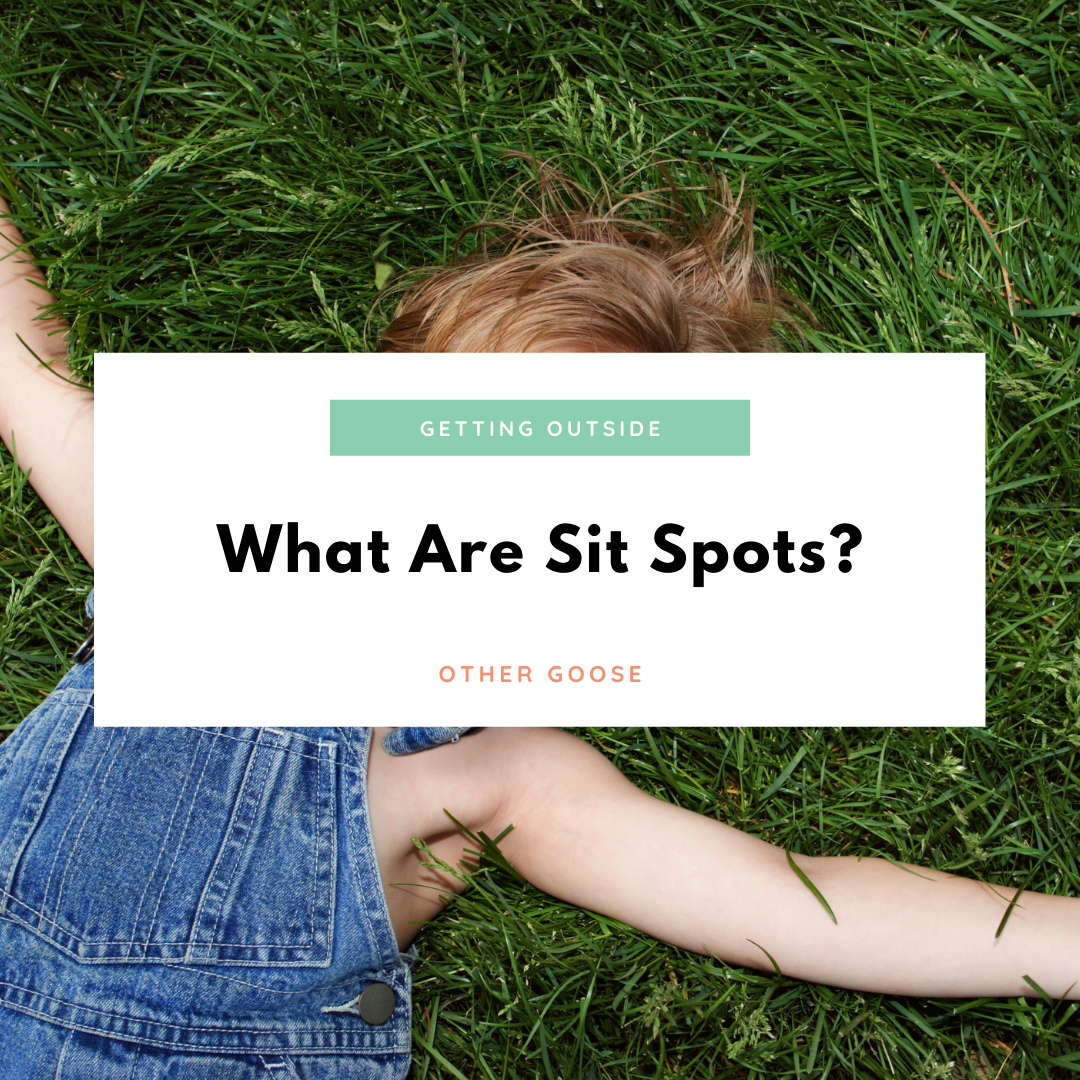
What if I told you of just 1 daily practice that holds immeasurable benefits for both you and your kids? That there exists a magical shortcut to help your whole family think clearly, respond calmly – heck, even sleep deeply? And that it’s 100% free and takes no more than 5 minutes a day?
You’d call me crazy, right?
Crazy or not, it’s all true. Read below for your crash course on sit spots, the beautiful, age-old forest school tradition that’s sure to transform your everyday life with littles – and beyond…
WAIT, FOREST SCHOOL?
That’s right! If you’re new to Other Goose, you’ll know that one of our core beliefs is that there is no ONE pedagogy that is best for the child. That’s why our curriculum reflects concepts, ideas, and benefits from a variety of pedagogies – classical to Waldorf to Montessori to Charlotte Mason – and in today’s post, specifically: forest school.
In case you’re unfamiliar, forest school is an early childhood education that takes place in forests or woodlands. Forest school is learner-led, offering kids an environment to foster deeper principles of curiosity and exploration through outdoor play and supported risk-taking. With a multi-faceted learning environment, kids discover a wide variety of social-emotional lessons like confidence, self-regulation, and cooperation – plus more nature-based, scientific themes like habitats, plant life, and environmental responsibility.
One of forest school’s core practices? Sit spots.
HOW IT WORKS
A sit spot, by definition, is a spot for sitting in nature! A sit spot can be anything: a fallen log, a park bench, a boulder perched beside a waterfall. Wherever your child chooses, the 3-tiered goal is the same: silence, reflection, and observation.
Truth be told, kids aren’t often known for silence and reflection, right? This is precisely why sit spots are so necessary! By creating a sit spot practice, you’re forming a habit that integrates relaxation into your day. It doesn’t have to look meditative or woo-woo, and in fact, with kids, it rarely does!
For a toddler, this might look like sitting on a favorite log in the woods for a minute or two and taking deep breaths. For a preschooler, it might mean using a magnifying glass to observe ants. For a kindergartner or elementary-aged child, it might be as simple as sketching the view from where he/she is sitting. Whatever the implementation, the ultimate goal is to work on engaging just 1 sense at a time: listening, looking, or feeling.
WHERE TO START
Believe it or not, beginning a sit spot rhythm is far easier than you think. Start small by visiting a nearby outdoor space – even if it’s just your backyard! – and plop yourself down in a cozy area. Your child may choose a sit spot close to you, or he/she may want one that offers a bit more independence. Bring along a blanket, and ask questions to encourage reflection, like “I hear a robin! What do you hear?” or “I like how the clouds look today.”
Five minutes is a good starter goal. The more you practice, the longer your sit spot routine can stretch. (Spoiler alert: You’ve likely already experienced the beauty of a sit spot if you’ve ever noticed how hushed and relaxed children seem when huddled around a campfire, or how spellbound they get gazing under a midnight sheet of stars.)
No matter how you implement the rhythm, resist the temptation to overthink it. One Other Goose member recently shared that her family was vacationing on the beach and her daughter decided to embark on a Mermaid Watch from the ocean shore. “My naturally boisterous toddler was completely silent and totally focused on every wave. It didn’t occur to me until later that she’d created her own sit spot, right there in the sand. It was a wonder to see!”
WHY THE FUSS?
I know, I know. It sounds so simple. How could sitting down and shushing up be so, so significant? In truth, the benefits of sit spots are enormous. Research tells us that sit spotting helps improve sleep, calms the mind, clarifies feelings, and builds critical thinking skills – not to mention the educational elements of learning about nature through observation.
And it’s not just for the kids! In a recent outdoor education study, researchers found that just an hour a week of nature immersion can make all the difference in engagement, focus, positivity and mood – for everyone involved. “The benefits of outdoor education for children are well documented, but a finding of this study is the impact that it had on [adults],” shared lead researcher Emily Marchant, PhD. Citing results like improved “satisfaction” and “personal wellbeing,” the effects on the adult participants were as markedly positive as those on the children.
A vastly improved outlook for the whole family in just a few minutes a day? That’s one heck of a ROI.
A NATURAL TOUCHPOINT
The beauty of sit spots is that the more you do it, the better you get. Make it a goal to visit the same sit spot as many times as you can until the habit sticks. By returning to a familiar sit spot throughout these early years, you’re offering your children a natural touchpoint throughout their entire lives. Over and over, the changing seasons of their childhood will be reflected back in the beautiful environment they’ve come to know – and love – so, so well.
Happy sitting!

p.s. Speaking of clear minds and better sleep, give your littles a boost with our brand new Mindfulness Bonus Pack here!
